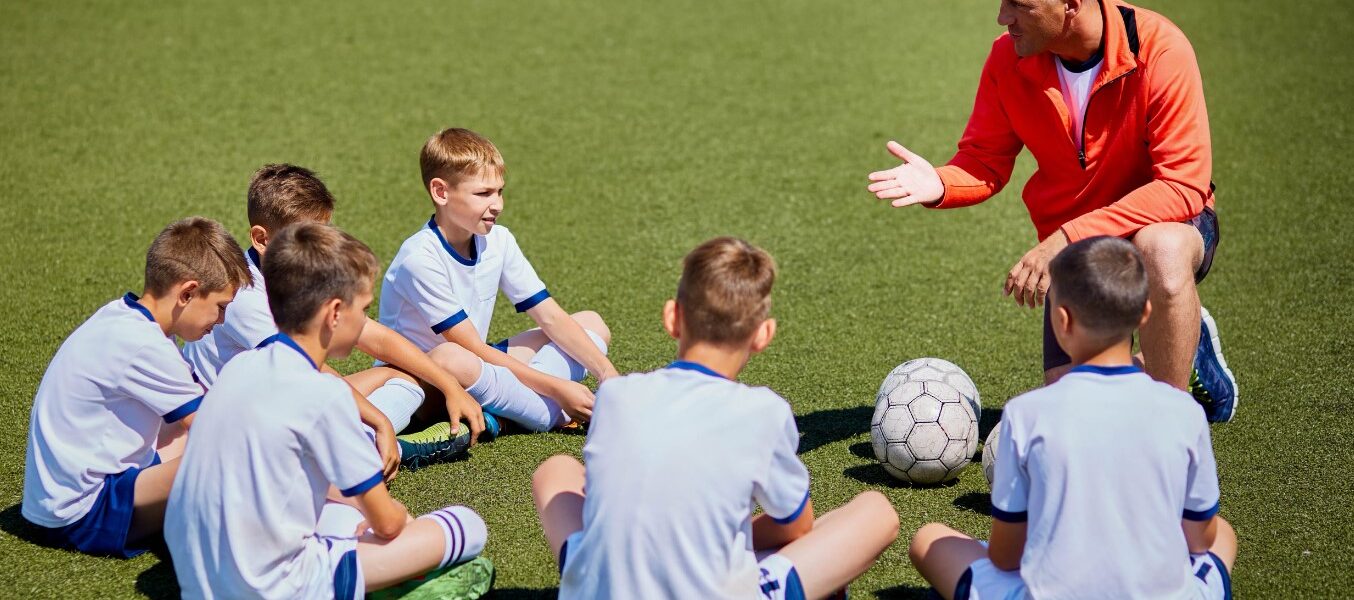For over a century, football has thrived on intuition—on managers reading the game with their eyes and scouts judging talent by instinct. But in 2025, a new player has entered the pitch, one that doesn’t wear boots or wave from the sideline: Artificial Intelligence (AI).
From smart cameras that analyze passing lanes in real-time to algorithms predicting injury risks and player potential, AI is rapidly redefining how football is coached, analyzed, and understood. It’s not replacing the human eye—it’s enhancing it. Coaches now have access to thousands of micro-insights per match. Scouts no longer rely solely on gut feelings—they use data models trained on millions of data points. AI is turning the world’s most emotional sport into a smarter, faster, and more strategic industry. But what exactly is changing—and what’s next?
AI in Coaching: The Era of Hyper-Precision
Modern coaches no longer rely on post-match video and handwritten notes. Instead, they tap into platforms powered by AI that break down every phase of play with remarkable precision.
📊 Tactical Analysis in Real-Time
Top clubs like Manchester City, Bayern Munich, and PSG are using AI-driven video tools that track every player’s position, movement, and spacing relative to opponents. These systems can:
- Detect formation shifts as they happen
- Highlight breakdowns in pressing patterns
- Suggest alternative defensive alignments instantly
In some cases, AI gives live in-game feedback directly to assistant coaches via tablets, allowing for minute-by-minute tactical tweaks.
🧠 Personalized Player Feedback
AI systems create individual performance dashboards for players after each session. These include sprint patterns, passing decisions, body orientation during ball reception, and heat maps compared to elite-level benchmarks.
For example, a fullback might receive a report showing they attempted fewer overlapping runs than their positional average. This level of precision wasn’t possible even five years ago.
AI in Scouting: Beyond the Human Eye
The scouting revolution is just as dramatic. While traditional scouting still plays a vital role, AI is now the silent engine behind talent discovery in nearly every top club’s recruitment department.
🌍 Global Data Mining
AI platforms such as Wyscout, SciSports, and Smarterscout ingest data from thousands of leagues—including obscure youth competitions and second-tier divisions. Machine learning models assess potential based on physical outputs, technical actions, and situational decision-making. Clubs are now identifying players years before they break out, by spotting data patterns that suggest future elite-level capacity—even if those players aren’t yet stars.
🔬 Predictive Performance Modeling
Some clubs have begun using predictive AI models that forecast a young player’s development curve over 3–5 years. These models account for:
- Physical growth rates
- Tactical adaptability
- Injury susceptibility
- Mental resilience scores (derived from behavioral patterns)
In essence, scouting is no longer about asking “Is this player good now?” but “How good will they be, and when?”
AI in Injury Prevention and Load Management
One of AI’s most impactful contributions is happening off the ball: reducing injuries and managing player fatigue. Using GPS wearables, sleep data, nutrition logs, and game load analytics, clubs can now detect the earliest signs of overuse or imbalance. Machine learning models flag athletes at risk of soft tissue injuries based on deviations from their biometric baselines.
This has led to:
- 20–30% fewer muscle injuries in some elite clubs
- Personalized training plans adjusted daily by AI-generated risk reports
- Longer peak performance years, especially in players over 30
AI in Youth Development: Smarter Academies
Academies are rapidly becoming laboratories of AI experimentation. Youth players wear tracking tech in training that feeds into development dashboards—measuring technical progress, spatial awareness, and reaction time.
AI helps academy directors:
- Compare progress against top graduates (e.g., “This player’s development at age 15 matches Phil Foden at the same stage”)
- Spot overlooked talent in underserved regions
- Remove unconscious bias in selection processes
In some clubs, players are even given virtual reality + AI simulations to rehearse game scenarios in a low-risk, high-feedback environment.
Ethics, Risks, and the Human Factor
Of course, the rise of AI in football isn’t without concern.
⚠️ Ethical Dilemmas:
- Bias in data models: AI systems are only as fair as the data they’re trained on. If historical data skews toward certain nationalities or physical types, the same biases can be reinforced.
- Privacy issues: Collecting biometric data raises important questions about consent, especially among young athletes.
- Overreliance: Football is still played by humans. Coaches who over-trust AI risk losing the intuitive, emotional edge that defines the game.
It’s crucial that AI be used as a tool, not a decision-maker. The best results come when it empowers, not replaces, human judgment.
Conclusion: The Smart Game Is Here to Stay
AI has changed how football is played, coached, and even understood. It has introduced a level of depth and objectivity that was once unimaginable—helping clubs become more efficient, players more aware, and scouts more accurate.
But perhaps its greatest contribution is yet to come. As AI becomes more intuitive, more integrated, and more democratized, even small clubs will gain access to tools once reserved for global giants. The competitive balance could shift—not to who has the biggest budget, but who uses their intelligence infrastructure best. The beautiful game is getting smarter. And in this new age of football, data is no longer the assistant—it’s part of the first team.

